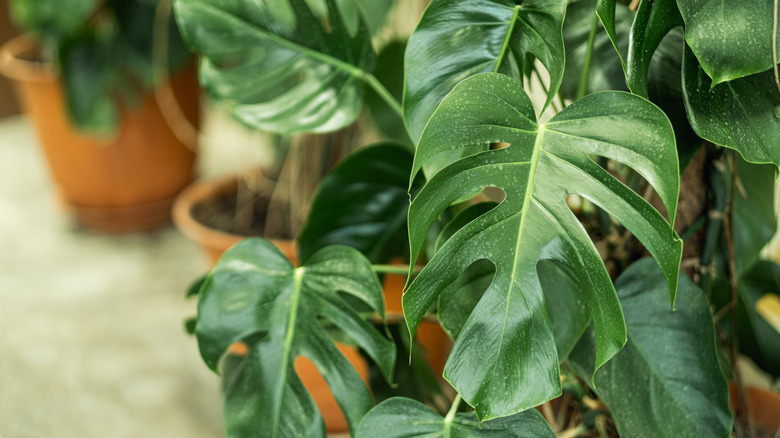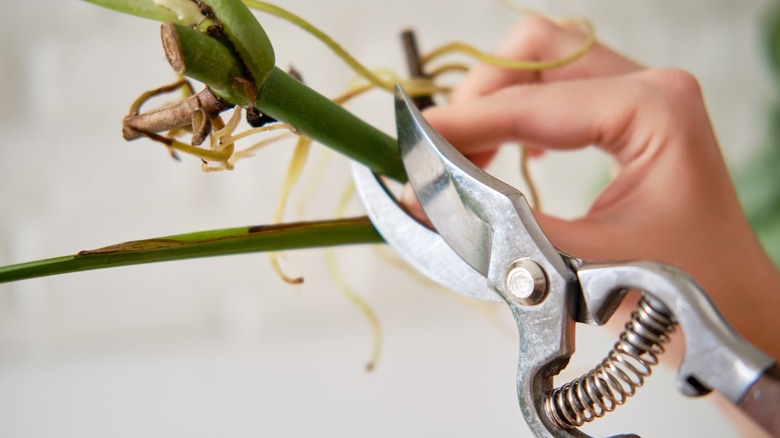How To Prune A Monstera Plant To Optimize Its Growth
We've all seen the #monsteragoals: towering plants with gorgeous glossy leaves and abundant splits. While you may be tempted to keep your monstera untouched to keep it as large as possible, the idea that pruning is bad is actually one of the most common myths about houseplants that has been debunked. Giving your plant a trim will actually help it grow toward those coveted #monsteragoals.
The best time to do any significant pruning is between spring and early fall (summer is the prime growing season), but you can prune dead or damaged leaves anytime. This ensures that your plant will be strong enough to heal quickly and successfully after its trim.
Before you begin, first assess your plant. Are its leaves a bit droopy? You want the leaves perky on pruning day so you can figure out how to shape the plant. If yours is looking a little puny, here's how to fix a floppy monstera plant. Next, identify the stems you want to remove, depending on how you want your monstera to look. Do you want it to continue growing upward? If so, leave the top alone. If you want it fuller and more compact, look for the leggiest stems.
Deciding where to prune
When you're ready to make the first cut, use clean, sharp gardening shears and wear gloves. Monsteras can release a toxic substance when cut that can irritate your skin, so be extra cautious about protecting your hands and your workspace. First, prune the obvious offenders. These include yellow, brown, wilted, or burnt leaves affected by a host of conditions — overwatering, underwatering, excessive sun exposure, pests, or disease. Although these leaves will eventually wilt and fall off, removing them sooner ensures that your plant remains as healthy as possible.
Next, cut off the smaller growth at the base of your plant. These tend to have weak stems, small leaves, and no fenestration. Make a 45-degree cut at the base of a stem, just above a node, where the stem and leaf connect. Next, untangle the longer stems and trim leggy ones — especially those that are overcrowding and crossing over each other. Once you're done pruning, try this trick to give your monstera a neat look.
The benefits of pruning
Chopping off stems seems counterintuitive when you're aiming for growth. But here's why it works. As you prune your monstera, the energy that kept those stems alive can now be redirected toward boosting the health of larger leaves or growing new leaves, including leaves with fenestration — the monstera's signature leaf holes and splits. Thinning out the monstera also allows more sunlight to reach the inner branches.
Pruning also gives you more control over how you want your monstera to look. If you have a certain shape in mind for your plant, pay attention to the nodes when you prune: The placement of the node indicates the direction of the new growth. Aerial roots can be pruned or wrapped around a moss pole, trellis, or any structure that your monstera is anchored to. You can also redirect the roots into the soil, but if the roots have been freshly trimmed, make sure the tip is fully calloused before doing so.
As you're deciding which stem to prune, you have the option of keeping the cutting for propagation. If you want to grow the cutting, pick a stem that has at least two leaves and then cut an inch or two below the node.


